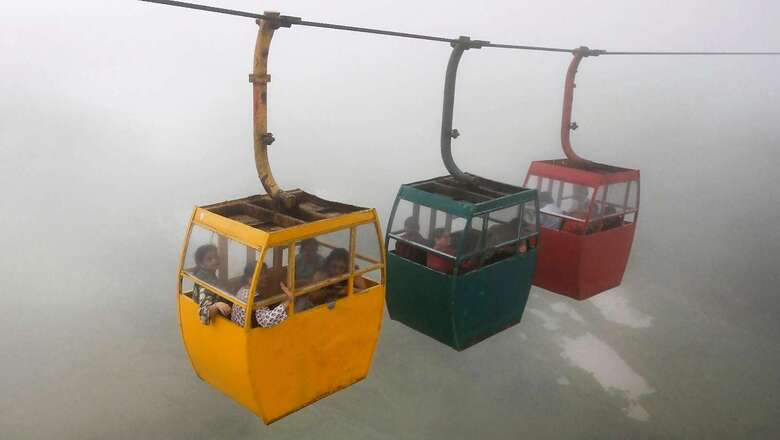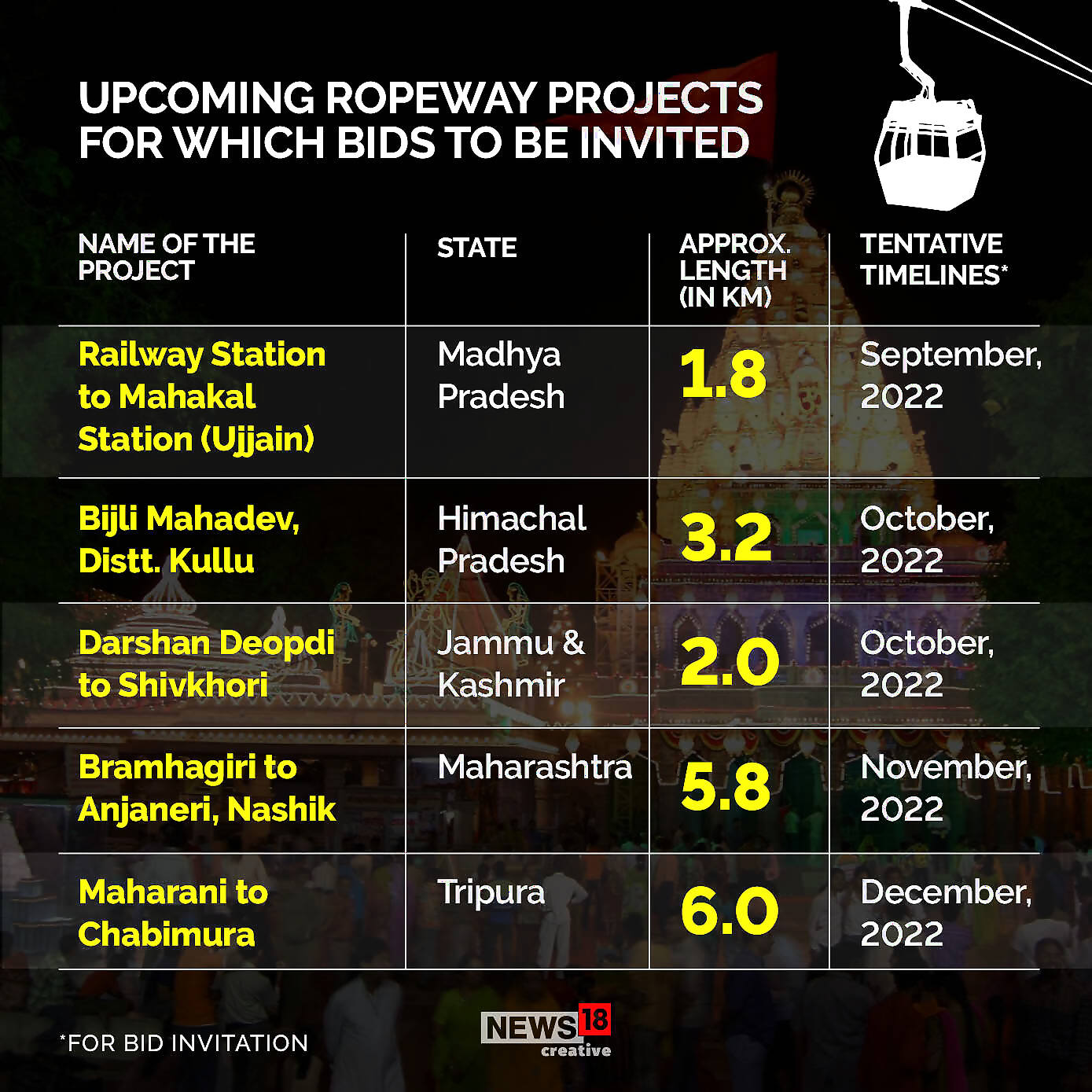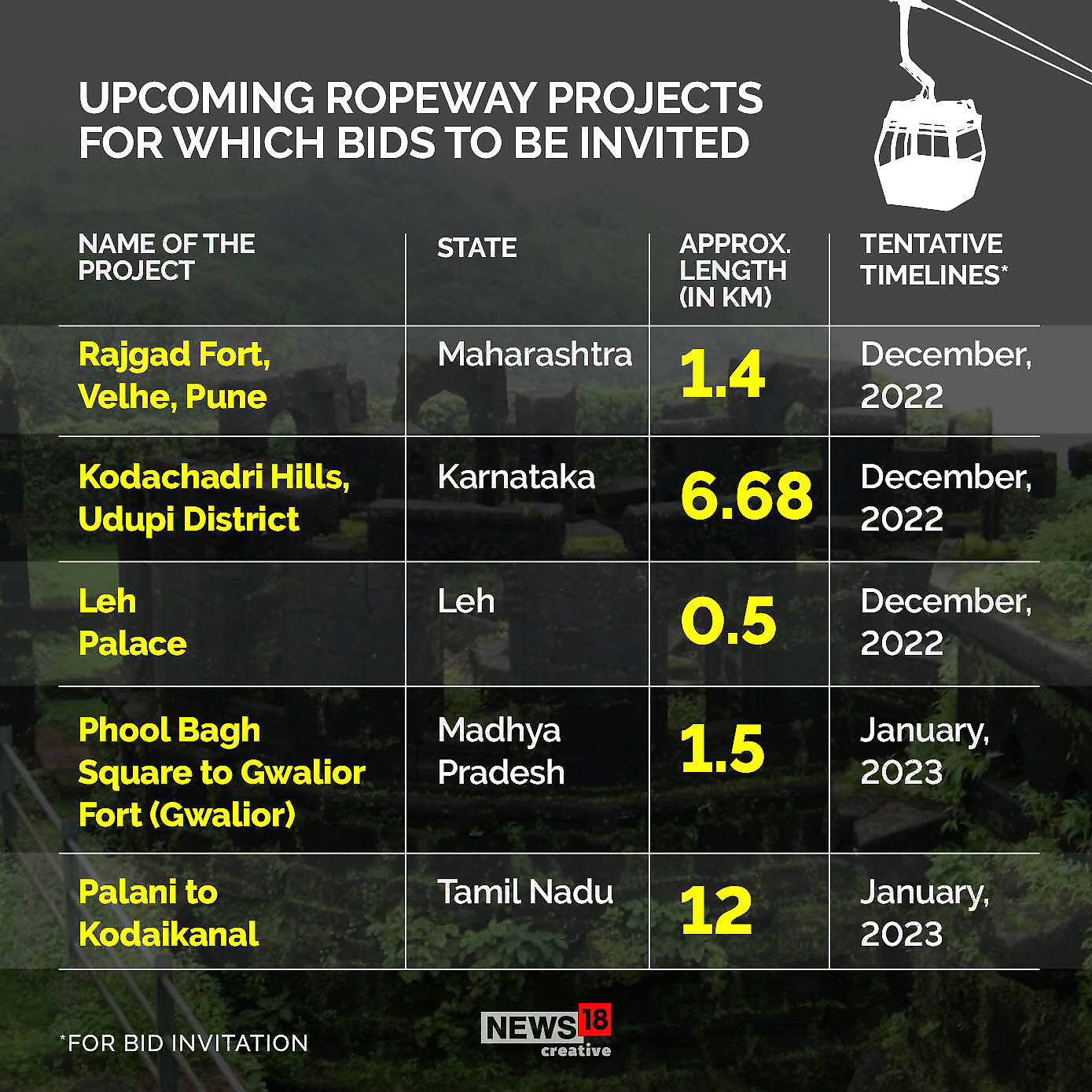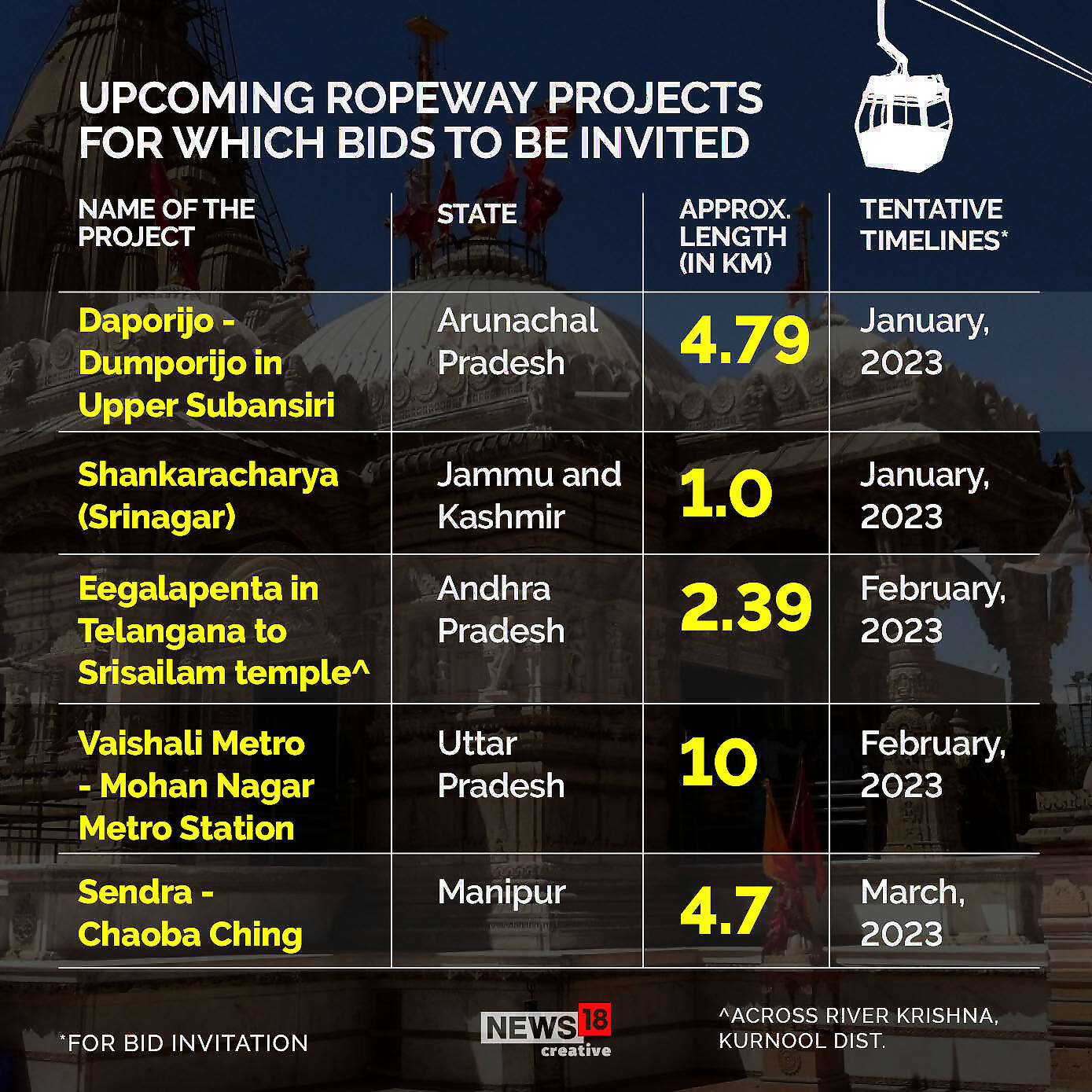
views
A kilometre-long ropeway to Srinagar’s Shankaracharya Temple, one across the river Krishna to the Srisailam Jyotirlingas temple in Kurnool, another one to the Leh Palace and one up to the Gwalior Fort — the Centre is planning to kick-start 18 such ropeway projects totalling about 90 km in the next few months.
News18 had reported earlier this week that the Centre invited tenders last Saturday for the construction of one of these 18 projects, a two-kilometre-long ropeway to the Mahakaleshwar Temple in Ujjain, ahead of Prime Minister Narendra Modi’s upcoming visit to the temple on October 11. Earlier this year, the Centre also asked for tenders to develop a ropeway in Varanasi, one to the Kedarnath temple and one to Hemkund Sahib in Uttarakhand which are expected to be finalised by the end of this year, officials said.

More such projects are on the anvil — from Jammu & Kashmir to Leh, Northeastern states like Tripura, Arunachal Pradesh and Manipur as well as in Tamil Nadu, Andhra Pradesh and Maharashtra. A 12-km-long ropeway project will be built in Tamil Nadu from Palani to Kodaikanal, a popular hill station. Another big project is a nearly 7-km-long ropeway to the Kodachadri hills in Udupi district, Karnataka, and an over 3-km-long one to the Bijli Mahadev Temple in Kullu, Himachal Pradesh.
In J&K, besides the prestigious ropeway project to the ancient Shankaracharya Temple atop a hill, a 2-km-long ropeway project is also envisioned from Darshan Deopdi to Shivkhori temple near Mata Vaishno Devi shrine in Jammu region. In Maharashtra, the Centre has planned a ropeway to the Rajgad Fort in Pune. The ropeway to the Srisailam Temple in Andhra Pradesh will be across the Krishna River from Eegalapenta in Telangana state. A 10-km-long ropeway is also planned from the Vaishali Metro Station to Mohan Nagar Metro Station in Ghaziabad in Uttar Pradesh.

Why Ropeways?
Ropeway projects have a maximum capacity of 6,000-8,000 passengers per hour through cable cars and can be built in a straight line over hilly terrain, thus compensating for their slower speed of 15-30 km per hour, as per a document of the National Highways Authority of India, which has been entrusted the job. Despite higher cost of construction per kilometre vis-à-vis road transport, the shorter length connecting origin and destination makes it more economical than roadways.

Ropeways are also a more attractive mode of transport for tourism and the travel industry in hilly terrains as well as urban transport for last-mile connectivity. The government is also conducting feasibility studies to build five more ropeway projects totalling about 30 kilometres in Uttarakhand. A proposal is also being considered for building a five-km-long ropeway in Nashik to Trimbakeshwar, also a Jyotirling, whose challenging terrains make it difficult for tourists to climb the hills.
Read all the Latest News India and Breaking News here




















Comments
0 comment